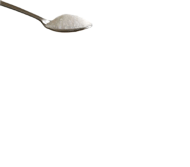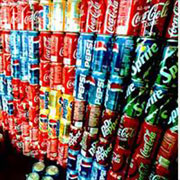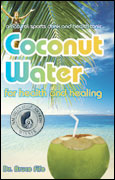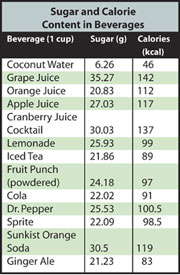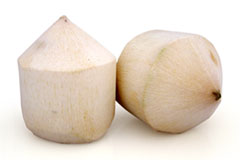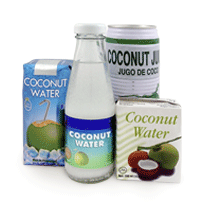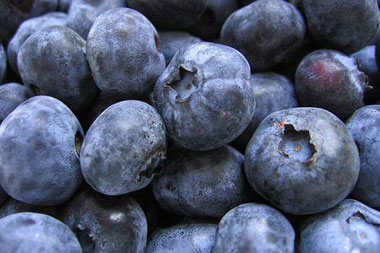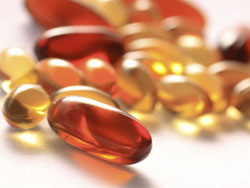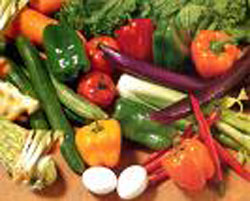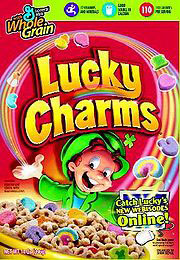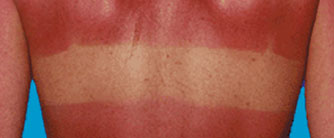|
E-Mail Edition Volume 6 Number 3 |
|||
|
Originally published Summer, 2009 Published by Piccadilly Books, Ltd., www.piccadillybooks.com. Bruce Fife, N.D., Publisher, www.coconutresearchcenter.org |
|||
|
If you would like to subscribe to the Healthy Ways Newsletter
|
Contents
|
||
|
\
|
Coconut Water: A Healthy, Low-Sugar Alternative to Soft Drinks
Take a glass and fill it with 10 spoonfuls of granulated sugar. No, you're not going to make a cake, this is a visual exercise. I want you to imagine yourself "drinking" the sugar like you would a glass of water. This is how much sugar you would consume if you drank a 12-ounce serving of Coca-Cola, or any other carbonated drink for that matter. Each 12-ounce serving of soda contains the equivalent of 10 or more teaspoons of sugar (mostly in the form of high fructose corn syrup). The thought of eating this much sugar at one time is sickening, yet every time you or your children drink a soda, this is the amount of sugar you get. If you order the large size drinks often available at convenience stores and fast food restaurants, you can take in two or three times this amount in one sitting. It's no wonder that soft drinks are called "liquid candy." Americans consume huge amounts of carbonated soft drinks. We drink, on average, 52.4 gallons of soda a year. That's a yearly consumption rate of 557 twelve-ounce cans for every man, woman, and child. That equates to 5,570 teaspoons (or 52 pounds) of sugar a year just from soft drinks! Many people, particularly infants, don't drink any soda, so those who do drink far more than these figures indicate. In addition, we also drink large amounts of noncarbonated soft drinks like fruit drinks, sports drinks, iced teas, and the like which are also loaded with sugar. Don't think fruit juices are any better than sodas. They're not. They contain just as much sugar as carbonated drinks and often contain preservatives, dyes, and other additives. Overindulgence in sugary drinks means excess calories that end up as body fat. We are in the midst of an obesity epidemic. Sixteen percent of children ages 6-19 are overweight; this up from only 5 percent in 1971. Among adults the rate of obesity has doubled over the past 30 years, rising from 15 to 31 percent. A total of 65 percent of adult Americans are now overweight. Carbonated soft drinks are the single biggest source of calories in our diet, providing about 7 percent of calories; adding in noncarbonated drinks brings the figure to 9 percent. Teenagers get 13 percent of their calories from carbonated and noncarbonated soft drinks. The average teenage boy consumes the equivalent of 2 twelve-ounce cans of soda a day; the average girl consumes 1 1/3 cans per day. That equates to 20 and 13 teaspoons of refined sugar respectively. When you exclude non-consumers, the daily consumption for teenagers averages 31 ounces, or 2.6 twelve-ounce cans. That amounts to 361 empty calories a day. In a year it comes to a total of 131,765 calories. It takes 3500 calories to produce one pound of body fat. Theoretically, in a year this amount of calories could be converted into a total of 38 pounds of body fat. No wonder Americans are getting fatter! No wonder our kids are experiencing an obesity epidemic. No wonder diabetes rates are increasing among teenagers and young adults. With this amount of sugar from soft drinks alone, not to mention other sources such as candy and sugary breakfast cereals, its no wonder kids are flying off the walls in school and teachers are demanding students be medicated to control hyperactive behavior. The USDA along with the World Health Organization (WHO) and many foreign governments have recommended that people limit added sugar to 10 percent or less of their daily calorie consumption. For example, a person who consumes 2,000 calories a day should limit themselves to 10 teaspoons of added sugar. That's the amount found in an average 12-ounce soft drink. We get sugar from many other sources of food throughout the day—pancakes, breakfast cereals, sweet breads, candy, snack cakes, etc. The 10 teaspoon maximum represents the amount from all sources, so even one 12-ounce drink is over the limit. An alternative to sweetened beverages are the diet or sugar-free varieties. In place of sugar, artificial sweeteners such as aspartame and sucralose are used. Artificial sweeteners, however, are no better for your health than excess sugar is. Studies have shown that these substances cause numerous health problems ranging from seizures to weight gain. Both diet and regular soft drinks contain numerous other ingredients which can also adversely affect health, such as caffeine, phosphoric acid, and sodium benzoate, to mention just a few. Soft drinks are a problem not only for what they contain, but also for what they push out of the diet. When people fill up on soft drinks they tend to eat less of the foods that supply essential nutrients. Studies show that children who consume more than 16 ounces of sweetened beverages per day have lower intakes of calcium, magnesium, zinc, vitamin A, and other nutrients, which increases risk of developing nutrient deficiencies. Soft drinks contribute to a number of health problems. As soft drink consumption has increased, certain health problems have become more prevalent. Several studies have provided evidence that soft drinks are directly related to weight gain. Weight gain, in turn, is a prime risk factor for type 2 diabetes. As we get older, excess weight also contributes to heart attacks, strokes, and cancer. Studies indicate that frequent use of soft drinks increases risk of tooth decay, attention deficit disorder (ADD), osteoporosis, kidney stones, and increases susceptibility to infectious illnesses. Sugar is one of the primary causes of tooth decay. Bacteria that feed on the sugar produce acids that erode tooth enamel, allowing cavities to develop. Soft drinks promote cavities because they bathe the teeth in sugar water, weakening the enamel and encouraging bacteria growth. A recent large study of young children in Iowa found the soda consumption was the strongest predictor of the dental cavities.1 In a study on bone mass development in girls, researchers found that soft drink consumption was associated with lower bone mass.2 Girls build 92 percent of their bone mass by age 18 and begin to lose bone mass at around the age of 30. Lower bone mass increases risk of osteoporosis later in life. In another study, Harvard researchers found an association between consumption of carbonated beverages and bone fractures in teenage girls.3 Among active girls, the risk of bone fracture was almost five times greater in girls who consumed colas compared to girls who did not. Among all girls in this study, the risk of bone fracture in those who consumed carbonated beverages was more than three times that in girls who did not consume carbonated beverages. Kidney stones are one of the most common disorders of the urinary tract. It is estimated that 10 percent of all Americans will develop kidney stones at some point in their lives. Seventy percent of those people who have had kidney stones have a reoccurrence. Studies show that soft drink consumers have an increased risk of developing kidney stones. In one study, for example, subjects who had suffered with kidney stones were divided into two groups. On group was asked to refrain from drinking sodas, while the other group had no restrictions. After three years those who reduced their consumption to less than half of their customary levels were one-third less likely to experience a recurrence of stones.4 Sodas and fruit drinks are popular, in part because they taste good. Water, a much healthier alternative, is considered by many to be too bland. Many people have been so conditioned to drinking flavored beverages that they don't like to drink water. Children particularly prefer beverages of one sort or another to comparatively tasteless water. Some health specialists recommend unsweetened herbal teas or even seltzer water, but what kid is going to willingly drink these? You need a beverage that is low in sugar, has no questionable additives, supplies essential nutrients, and tastes good enough that kids as well as adults will enjoy drinking it. The perfect solution is coconut water. |
||
|
|
Coconut water is the liquid found inside young coconuts. We've all seen the advertising photos of vacationers on the beach sipping coconut water through a straw from a fresh coconut. The water has a unique, refreshing taste. Contrary to what you might think, coconut water does not taste like a coconut. It has a mildly sweet, slightly nutty flavor. The water in a young or immature coconut is distinctly different from the liquid found in older, mature coconuts commonly sold in grocery stores. Mature coconuts are the |
||
|
|
brown hairy nuts you typically see in the grocery store. Young coconuts are picked before they are fully mature. The juice in the young coconut is sweeter and much better tasting. It is the most popular beverage in the tropics. Coconut water is sometimes referred to as coconut juice. In the United States, it is often mistakenly referred to as coconut milk. Coconut water is not the same as coconut milk. Coconut water is the fluid inside coconuts. Coconut milk, on the other hand, is a manufactured product produced by crushing or squeezing the juice from coconut meat. Coconut water and coconut milk are very different from one another in appearance, taste, texture, and nutritional content. Coconut milk is a white color with a thick creamy consistency. Coconut water is a slightly opaque liquid and looks pretty much like water. Coconut water is completely natural with no artificial additives or chemicals, no flavorings, and no cholesterol, and is low in sugar and fat with an assortment of vitamins, minerals, antioxidants, and other health promoting phytonutrients. It is an excellent source of health promoting potassium. |
||
|
Coconut water tastes sweet, but the sugar content is actually very low compared to other beverages. Coconut water has less than 1/3 the amount of sugar as ginger ale or iced tea and 1/5 the amount found in Sunkist Orange Soda or grape juice. |
You don't need to live in the tropics to enjoy coconut water. It is available in the temperate climates in various forms. The most natural way to get coconut water is directly out of the shell. When the coconut is on the tree, the shell—the brown hairy thing you see in the store—is covered by a thick fibrous husk. This husk is removed when they ship the coconuts to market. That is why we only see the hard, |
|
|
|
|
brown shell. You can also buy young coconuts in the shell as well, but they look different. Ordinarily only the outside of the husk is removed, leaving about an inch-thick layer of white colored husk around the shell. After the outside layer of the husk is shaved off they look like large toy tops—flat on one end and pointed on the other. You can find them in the refrigerated section of most good health food stores. Store them in your refrigerator. They are perishable so it is best to consume them within a few days of purchase. Young coconut water is also available in a variety of commercially packaged containers—bottles, cans, and Tetra Paks. The benefit with these is that they will last for several months, don't need refrigeration, and can easily be carried to work, school, or recreational events. They make an excellent thirst quencher when participating in sports or outdoor activities. Next time you visit your health food store, ask them about coconut water.■
References 1. Marshall, T.A., et al. dental caries and beverage consumption in young children. Pediatrics 2003:112:184-191. 2. Whiting, S.J., et al. Relationship between carbonated and other low nutrient dense beverages and bone mineral content of adolescents. Nutr Res 2001;21:1107-1115. 3. Wyshak, G. Teenaged girls, carbonated beverage consumption, and bone fractures. Arch Pediatr Adolesc Med 2000;154:610-613. 4. Shuster, J., et al. Soft drink consumption and urinary stone recurrence: a randomized prevention trial. J Clin Epidemiol 1992;45:911-916.
|
||
|
|
Research Shows Blueberries Lower Cholesterol Better than Drugs By Mike Adams
New research reveals the exciting fact that blueberries provide an effective way to lower cholesterol without the dangers of statin drugs. In fact, the research shows that a compound in blueberries acts just as effectively as statin drugs to reduce the levels of bad cholesterol or LDL cholesterol in mice but without the negative side effects of statin drugs (such as having your muscles waste away). |
||
|
|
In response to these results, the U.S. Department of Agriculture (USDA) thinks that perhaps the antioxidant ingredient could be 'developed as a treatment.' Huh? What kind of development do we need here? Can't people just grab blueberries and chew on them and swallow the antioxidants the way normal human beings do? Do we have to 'develop a treatment' by somehow modifying blueberries |
|
|
|
|
into some kind of genetically altered Frankenberry that can be sold to people at a hundred times the price of blueberries from their local grocery store? Well, apparently so. Now researchers from pharmaceutical companies are busy studying the chemical compounds found in blueberries trying to find ingredients they can isolate, modify, patent and hype up to the American public as the latest miracle anti-cholesterol drug. It's downright amazing that none of the people who look at this come to the obvious conclusion that hey, maybe we should just tell people to eat more blueberries. And, if some of these people could take yet another quantum leap of introspection, perhaps they could realize that there might be other berries that are also good for human beings, such as cranberries, raspberries, strawberries, acai, or pomegranate seeds. But no, instead it's all about how can we exploit this naturally occurring chemical compound and use it to make some bucks for corporate investors. That's the way big pharma works. Here's a hint for all the free-thinking people out there who haven't given in to the propaganda from the mass media and the pharmaceutical industry: just eat some blueberries, folks. It's really not complicated. This is what your ancestors did. This is what your body was designed to eat. Just go out, eat some fresh roots like carrots and radishes, get yourself some fresh greens such as spinach, broccoli and kale, and eat fresh berries in large quantities—blueberries, raspberries, blackberries and strawberries. While you're at it, by the way, you could chew on some wholesome nuts like almonds, cashews or my favorite: macadamia nuts. And if you did all of this on a daily basis without consuming the processed foods common to western societies, you would likely find that you don't need any prescription drugs whatsoever. Miraculously, you would be a perfectly healthy human being. This is especially true if you would supplement with superfoods like spirulina, chlorella, broccoli sprouts and other similar concentrate nutrient sources. You'd find your cholesterol achieving perfect balance. You would find your nervous system to be in perfect health, and you would experience accelerated healing at every level. Food is that powerful. It's the ultimate medicine. Let's be honest about this. How narrow-minded do these drug company types really have to be to take a look at a gift from nature like blueberries and realize that it has a powerful chemical compound that lowers cholesterol naturally with zero side effects, and then decide that hey, maybe we could exploit this to make a new profitable prescription drug that we could market to the public at sky high prices! How ethically twisted do you have to be as an individual to think that way about the healing foods nature has provided? Here's what we really need to be doing in this country. In our hospitals, we need to eliminate the junk food restaurants and the processed foods, and we need to visit the patient rooms with plates full of fresh berries so that patients can eat these berries. We need to open up the windows and let some sunshine and fresh air into those rooms. We need to bring in some healing superfoods and let patients munch all day long on the foods that we know prevent chronic disease. While we're at it, we need to kick McDonald's restaurants and soft drink vending machines out of our hospitals and public schools, too. And lastly, we need to take these narrow-minded researchers and pharmaceutical company doctors and force them to write on the chalkboard, "I will never steal from nature," 1,000 times until they finally get the point. ■
Source: http://www.naturalnews.com/002906.html
|
||
|
|
Blueberries and Brain Health A new study reveals that blueberries are a super food that can protect the brain from the effects of premature aging.
Study Title:A blueberry-enriched diet provides cellular protection against oxidative stress and reduces a kainate-induced learning impairment in rats.
Study Abstract:Young male Fischer-344 rats were fed a diet containing 2% blueberry (BB) extract or control diet for at least 8 weeks and then received bilateral hippocampal injections of kainic acid (KA 200 ng/0.5 μl) or phosphate buffered saline (PBS). One week later rats were trained in one-way active footshock avoidance in a straight runway followed the next day by training in a footshock motivated 14-unit T-maze with documented sensitivity to hippocampal glutamatergic manipulations. Based on analyses of several performance variables, KA-treated rats exhibited clearly impaired learning performance; however, the BB diet significantly reduced this impairment. Supporting the behavioral findings, stereological assessment of CA1 pyramidal neurons documented greater neuronal loss in KA-treated controls compared to KA-treated rats on the BB diet. In an in vitro experiment, FaO cells grown in medium supplemented with serum from BB-fed rats had enhanced viability after exposure to hydrogen peroxide. These findings suggest that BB supplementation may protect against neurodegeneration and cognitive impairment mediated by excitotoxicity and oxidative stress.
Study Information:Kara B. Duffy, Edward L. Spangler, Bryan D. Devan, Zhihong Guo, Jonna L. Bowker, Anne M. Janas, Adrienne Hagepanos, Robin K. Minor, Rafael DeCabo, Peter R. Mouton, Barbara Shukitt-Hale, James A. Joseph, Donald K. Ingram A blueberry-enriched diet provides cellular protection against oxidative stress and reduces a kainate-induced learning impairment in rats. Neurobiology of Aging, 2008 November Volume 29, Issue 11, Pages 1680-1689. Laboratory of Experimental Gerontology, Intramural Research Program, National Institute on Aging, National Institutes of Health, 5600 Nathan Shock Drive, Baltimore, MD 21224, USA. ■
|
||
|
|
Vitamins Not As Helpful As Believed Many people take vitamin and mineral supplements in hopes of reducing their risk for heart disease, cancer and other degenerative diseases, and some research does supports those hopes. But several recent large long-term studies have found that supplements work no better than placebos. Ever since the Nobel Prize-winning biochemist Linus Pauling first promoted "megadoses" of essential nutrients 40 years ago, Americans have been devoted to their vitamins. Today about half of all adults use some form of dietary supplement, at a cost of $23 billion a year. But are vitamins worth it? Recently several high-quality studies have failed to show that extra vitamins, at least in pill form, help prevent chronic disease or prolong life. The most recent news came earlier this year after researchers in the Women's Health Initiative study tracked eight years of multivitamin use among more than 161,000 older women. Despite earlier findings suggesting that multivitamins might lower the risk for heart disease and certain cancers, the study, published in The Archives of Internal Medicine, found no such benefit. Last year, a study that tracked almost 15,000 male physicians for a decade reported no differences in cancer or heart disease rates among those using vitamins E and C compared with those taking a placebo. And in October, a study of 35,000 men dashed hopes that high doses of vitamin E and selenium could lower the risk of prostate cancer. |
||
|
|
Everyone needs vitamins, which are essential nutrients that the body can't produce on its own. Inadequate vitamin C leads to scurvy, for instance, and a lack of vitamin D can cause rickets. Most major vitamin studies in recent years, however, have not focused on deficiencies but on whether high doses of vitamins can prevent or treat a host of chronic illnesses. While people who eat lots of nutrient-rich fruits and vegetables have long been known to have lower rates of heart disease |
|
|
|
|
and cancer, it hasn't been clear whether ingesting high doses of nutrients in pill form results in a similar benefit. In January, an editorial in The Journal of the National Cancer Institute noted that most trials had shown no cancer benefits from vitamins — with a few exceptions, like a finding that calcium appeared to lower the recurrence of precancerous colon polyps by 15 percent. But some vitamin studies have also shown unexpected harm, like higher lung cancer rates in two studies of beta carotene use. Another study suggested a higher risk of precancerous polyps among users of folic acid compared with those in a placebo group. In 2007, The Journal of the American Medical Association reviewed mortality rates in randomized trials of antioxidant supplements. In 47 trials of 181,000 participants, the rate was 5 percent higher among the antioxidant users. The main culprits were vitamin A, beta carotene, and vitamin E. Vitamin C and selenium seemed to have no meaningful effect. "We call them essential nutrients because they are," said Marian L. Neuhouser, an associate member in cancer prevention at the Fred Hutchinson Cancer Research Center in Seattle. "But there has been a leap into thinking that vitamins and minerals can prevent anything from fatigue to cancer to Alzheimer's. That's where the science didn't pan out." Everyone is struggling to make sense of the conflicting data, said Andrew Shao, vice president for scientific and regulatory affairs at the Council for Responsible Nutrition, a vitamin industry trade group. Consumers and researchers need to "redefine our expectations for these nutrients," he said. "They aren't magic bullets." Part of the problem, he said, may stem from an inherent flaw in the way vitamins are studied. With drugs, the gold standard for research is a randomized clinical trial in which some patients take a drug and others a placebo. But vitamins are essential nutrients that people ingest in their daily diets; there is no way to withhold them altogether from research subjects. The selling point of antioxidant vitamins is that they mop up free radicals, the damaging molecular fragments linked to aging and disease. But some free radicals are essential to proper immune function, and wiping them out may inadvertently cause harm. "Most antioxidants are also pro-oxidants," said Dr. Peter H. Gann, professor and director of research in the department of pathology at the University of Illinois at Chicago. "In the right context and the right dose, they may be able to cause problems rather than prevent them." Scientists suspect that the benefits of a healthful diet come from eating the whole fruit or vegetable, not just the individual vitamins found in them. "There may not be a single component of broccoli or green leafy vegetables that is responsible for the health benefits," Dr. Gann said. "Why are we taking a reductionist approach and plucking out one or two chemicals given in isolation?" We know that vitamins are essential to good health and can prevent disease. We also know that vitamin supplementation is useful in preventing and treating numerous diseases. The real question is: How beneficial are vitamin supplements in preventing chronic conditions like heart disease and cancer? Study after study has demonstrated the benefit of whole foods rich in vitamins and minerals in preventing disease, including those of the heart and |
||
|
|
circulatory system. Supplements, however, may not be as good as real food. One of the problems with dietary supplements is that they often contain synthetic vitamins which are not the same as natural vitamins. Although they may look similar and have similar physiological effects, they are not identical. Therefore, their effects are not identical. So the synthetic vitamins may be less effective at protecting against certain health conditions. |
|
|
|
Processed foods are not a good source of vitamins and minerals even if they are "fortified." |
Another shortcoming with synthetic vitamins is that they are isolated nutrients. Vitamins in foods are never isolated but occur with dozens, if not hundreds of other vitamins, minerals, and nutrients, all of which work synergistically together. For example, vitamin E is not simply one vitamin, but consists of a family of eight vitamins. Dietary supplements usually contain only one form of vitamin E. Foods, however, contain mixtures of all eight forms. While each form of vitamin E is similar in structure, they each have their own characteristics and affect the body differently. Each of these forms of vitamin E provides benefit. When combined they provide the greatest protection against heart disease and other conditions. But when isolated, that protection may seriously decline or even disappear. The same is true with vitamin C. In nature vitamin C is always associated with bioflavonoids. They work synergistically together. It is no wonder then, when studies use isolated nutrients the results are unimpressive. Foods contain hundreds of nutrients that work together for your health. Dietary supplements contain only a few. Some vitamins may become toxic when taken in isolation from other nutrients. For example, vitamin D, an essential nutrient, can become toxic at high doses. But when combined with vitamin A, the toxicity level plummets rapidly. Vitamins D and A work synergistically together to provide many health benefits but too much of one without the other can lead to problems. This may explain why some studies have shown detrimental effects with large doses of beta-carotene and vitamin A. This is only seen in dietary supplements. Vitamins from whole foods do not cause these problems. What we can learn from these studies is that eating isolated nutrients does not guarantee good health. Many people tend to think that if they take a vitamin and mineral supplement, it gives them an excuse to make poor eating choices. It doesn't. Eating a bowl of Lucky Charms breakfast cereal, which is fortified with several vitamins and minerals, is not a nutritious breakfast! Likewise, white "enriched" bread is not the same as eating whole wheat bread. Vitamins don't make up for a poor diet or for highly processed, nutrient deficient foods. Dietary supplements are just that—supplements, not food. The only way you can get all the protective vitamins and minerals you need to be healthy is from real foods. ■ |
||
|
References: Sesso, H.D., et al. Vitamins E and C in the prevention of cardiovascular disease in men: the Physicians' Health Study II randomized controlled trial. JAMA. 2008;300(18):2123-2133.
Lippman, S.M., et al. Effect of selenium and vitamin E on risk of prostate cancer and other cancers. JAMA. 2009;301(1):39-51.
Neuhouser, M.L. Multivitamin use and risk kof cancer and cardiovascular disease in Woman's Health Initiative cohorts. Arch Intern Med. 2009;169(3):294-304.
|
|||
|
|
During Pregnancy, Starving for TwoBy Tara Parker-Pope
Recently, new guidelines urged women to be more vigilant about weight gain during pregnancy. While much of the focus is on women who gain too much weight during pregnancy, health officials estimate that about 20 percent of pregnant women don't gain enough weight, which can lead to premature delivery, low birth weight and long-term health problems for the baby. The momlogic blog features the story of a woman with "pregorexia," a term often used to describe preoccupation with weight control through extreme dieting and exercising while pregnant. The writer, Maggie Baumann, now a family therapist in Newport Beach, Calif., says a normal weight gain of 33 pounds during her first pregnancy led to an obsession with controlling her weight during her second. "It was during my second pregnancy when the disorder appeared in its full force. I simply told myself, 'I am not going to gain a lot of weight, and I am not going to allow my body to get 'big' like I felt happened with my first pregnancy.' My doctor never knew the extreme exercise routine I followed. No one knew. I kept my calorie restriction, my exercise intensity and extended workouts a secret, even from my husband. When my doctor instructed me to stop exercising, I rationalized that I would not work out in the gym, but I could power walk and do whatever I could to burn calories 'outside the gym.' I truly believed at that time my baby would be safe." Ms. Baumann gained a total of 18 pounds on a 5′8″ frame, but as an accompanying slideshow illustrates, she barely looked pregnant. During the 7th month of pregnancy, a bleeding problem suggested the baby was experiencing intrauterine growth retardation. After birth, her child developed seizures and attention deficit problems, which her doctor suggested may have been linked with poor fetal nutrition. After pregnancy, Ms. Baumann says she continued to struggle with anorexia but is now in recovery. ■
Source: The New York Times
|
||
|
Some Substances that Sensitize the Skin to Sunlight
XANAX
(taken by mouth)
chlorhexidine
Merck Online Medical Library * Names in CAPS are common trade names. |
Foods and Medications That Raise the Risk of Sunburn and Skin Cancer This summer, if you are going to the beach, plan on a cookout, or participate in any outdoor activity, you need to be careful about excessive sun exposure. In order to avoid sunburn we are often advised to slather ourselves with sunscreen, reapply it often, and stay in the shade as much as possible. This advice may not be that helpful. What many people don't know is that many common medications can intensify the effects of sunlight, greatly raising the risk of burning, rashes, skin cancer, and other skin problems, even after only a little time in the sun. Studies show that this can happen in at least two ways. One, known as a photo-allergic reaction, occurs when a certain medicine or substance is applied to the skin. Ultraviolet light from the sun transforms the substance in a way that provokes the immune system, leading to irritated skin and eczema-like rashes. The onset of visible symptoms is usually delayed 24 hours to several days. Far more common is a phenomenon called phototoxic reaction. It occurs when a person ingests the drug or substance in question, then spends time in the sun. Exposing the skin to ultraviolet rays excites molecules of the ingested substance, causing damage to tissue — severe redness and sunburn, for example — that is almost immediately apparent. The list of drugs (see sidebar) that can cause sun sensitivity is long, but among the most common culprits are antibiotics like tetracycline, certain antihistamines, and topical antimicrobials. It is of interest to note that at the bottom of the list we find sunscreen! Sunscreen is suppose to protect us from harmful UV radiation from the sun, yet at the same time it sensitizes us to these rays, increasing vulnerability to sunburn, skin cancer, and other sun-related problems.
It's almost like an addiction: if you don't use it, you will burn, but if you do use it, you will become more sensitive to the sun and need to depend on the lotion more and more. It makes a great marketing strategy. Such a strategy has worked wonders for the sales of tobacco products and caffeinated drinks, so why not sunscreen? There is another option—coconut oil. Coconut oil is the original sunscreen/suntan lotion. A layer of coconut oil on the skin has a remarkable ability to protect the skin from sunburn. This is the only sunscreen used for generations by Pacific islanders who were exposed daily to the hot, tropical sun yet did not get sunburned or develop skin cancers. Another thing that can have a very marked influence on sun sensitivity is food. The most problematic foods are polyunsaturated vegetable oils and items that contain these oils. Polyunsaturated vegetable oils are very delicate and oxidize easily when exposed to sunlight. When you eat polyunsaturated vegetable oils, these oils are incorporated into skin tissues, indeed into all the tissues of the body. When sunlight hits these oils, which are incorporated into skin cells, they easily oxidize or degrade, causing the formation of destructive free radicals that intensifies the damage from UV radiation. The result is hypersensitivity to sunlight and increased susceptibility to sunburn and skin cancer. If your diet contains a lot, or any, polyunsaturated oils, your skin will burn easily. Applying coconut oil on the skin will provide some degree of protection, but to gain full protection from the sun, not only do you need to use coconut oil topically, but you need to eliminate all polyunsaturated vegetable oils in your diet. If your diet includes polyunsatured vegetable oils, you will only get partial protection from the topical use of coconut oil. You will need to limit your sun exposure and apply coconut oil often. The most common vegetables oils that you should avoid are corn, soybean, safflower, sunflower, cottonseed, and canola oils, and all margarines and shortenings. If your diet is free from polyunsaturated vegetable oils, and you eat coconut oil as a part of your everyday diet, one or two applications of coconut oil on your skin will protect you from the sun for an entire day. If you have been eating polyunsaturated vegetable oils, it may take a year or more to replace them in your body tissues. So even after you eliminate these oils from your diet and replace them with other healthier oils, such as coconut or palm oil, it will take some time for your body to lose its hypersensitivity to the sun. Sunscreen is not a good solution because it promotes sensitivity.
THE BOTTOM LINE Foods containing polyunsaturated vegetable oils and many drugs, including sunscreens, can raise a person's sensitivity to sunlight. Coconut oil used internally and externally can protect you against the damaging effects of UV radiation. ■
|
||
|
Do you have friends who would like this newsletter? If so, please feel free to share this newsletter with them.
If this newsletter was forwarded to you by a friend and you would like to subscribe, click here.
Copyright © 2009, Bruce Fife. All rights reserved.
|
|||
